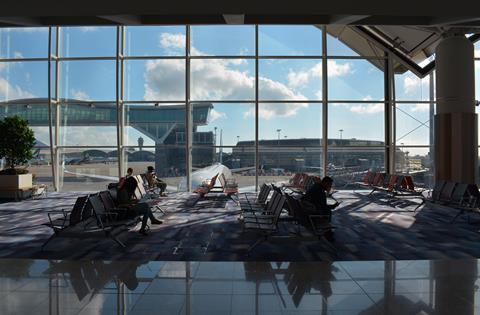Hong Kong has suspended its ‘circuit breaker’ flight ban rule, acknowledging that it has brought about “unnecessary trouble” to those wishing to re-enter the city.
The move, which takes effect immediately, was also welcomed by airline body IATA, which called it a “step forward” in what could be a long-drawn recovery process.
A government statement dated 7 July says it decided to suspend the ‘circuit breaker’ mechanism upon “preliminary review of data and scientific analysis”, which has shown that “further and more enhanced” testing is better at detecting – and subsequently – stopping the importation of coronavirus cases.

Under the ‘circuit breaker’ rules, airlines found to be carrying more than five passengers infected with Covid-19 faced a five-day operational ban, which has stretched to as long as two weeks at the peak of infections in the city.
The mechanism is part of the city’s zero-infection strategy, in line with Mainland China, which has a similar rule in place.
Hong Kong has said the ‘circuit breaker’ rule was “intended to prevent the importation of a large number of cases from individual places of higher risks within a short period of time”.
In its latest statement, Hong Kong officials acknowledge that the “consequential social costs” of such a rule “would be quite high”.
“[The] social costs incurred by the flight suspension mechanism would be quite significant. The suspension would also bring about unnecessary disturbances to these students studying abroad and their families,” the statement reads.
It also notes that July and August are traditionally peak periods for travel into Hong Kong, especially students studying overseas, and that any flight ban would upend travel plans and “bring about unnecessary disturbances” for these students and their families.
The move to suspend the ‘circuit breaker’ rule is expected to be widely welcome by airlines, not least by home carrier Cathay Pacific. IATA, in a separate statement, has also urged Hong Kong to go further in easing its onerous travel curbs.
“[The suspension] provides certainty for both airlines and their passengers on the flights that will be operated to and from Hong Kong. The additional PCR test adds to the inconvenience of traveling to Hong Kong. Most parts of Asia have either removed or are moving towards removing Covid-19 tests.
It adds: “Overall, today’s announcement is a step forward. We urge the government to eventually remove the need for quarantine so that Hong Kong’s aviation sector can start the recovery journey.”
IATA director-general Willie Walsh has previously warned that Hong Kong was “effectively off the map” as a global aviation hub, as it continued with its restrictions.
In late-April, Hong Kong allowed non-resident visitors to enter the city – for the first time in more than two years – though it upheld quarantine and testing requirements.
The easing of travel restrictions also comes as Hong Kong international airport prepares to open its third runway, as part of a multi-billion dollar expansion project.
For the first five months of 2022, the airport only saw 545,000 passengers pass through, a fraction of the 31.4 million passengers recorded during the same period in pre-pandemic 2019.


























